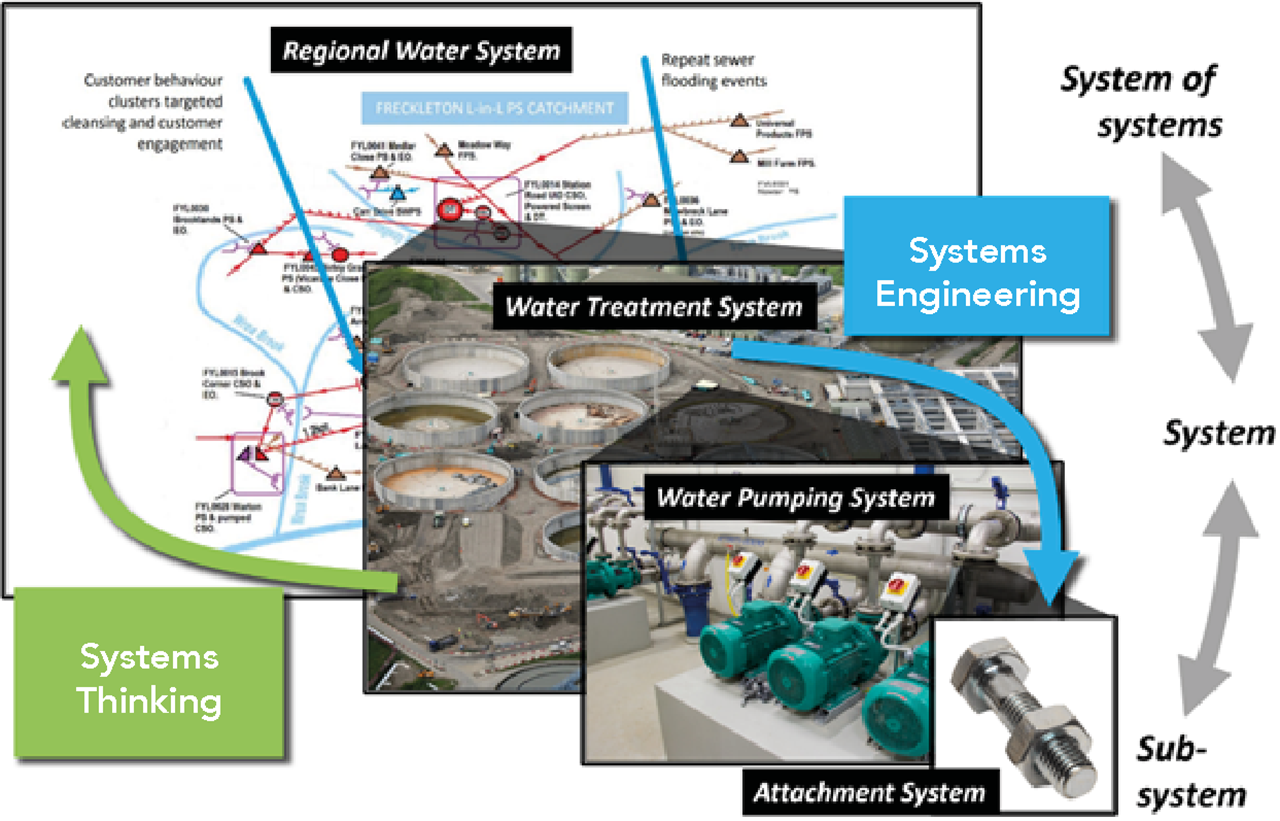The relationship between ‘systems thinking’ and ‘systems engineering’
We are delighted that systems thinking is rightly getting a lot of press as Ofwat and the water industry in general, acknowledges the importance of using a systems-based approach to successfully solve increasingly complex business challenges and deliver the levels of service expected by customers.
However, this increased attention creates a problem: ask five people what systems thinking means, and you’ll get 10 different answers.
Sometimes it feels like we are blind men feeling various parts of an elephant, each coming away with a different idea of what it is?
Most commentators agree that systems thinking is about lifting people’s vision up and away from technical detail to see the bigger picture. In other words, stop your obsession with the performance of individual assets, and consider how those assets work together to achieve the overall effect. This is called abstraction – helping people to avoid the distraction of the trees so they can see the wood – and in a complex world, the ability to do this is vital.
The question is, what do people consider a system to be? In some ways the answer is simple: you are being asked to think bigger than the individual assets to consider how they fit into the bigger system. But in fact, each asset is itself a system and is made up of smaller systems! So, we are not just talking about a single system: there are systems-of-systems (look outside), and there are subsystems (look within).

A system is anything that is more than the sum of its parts. A clock is not just a collection of cogs and springs: take it apart, and it will no longer tell you the time. More than the sum of its parts, it is about how those parts fit together to achieve the designed outcome.
For example, a drinking water supply system is more than the sum of its treatment plants, storage tanks, network of pipes, valves and booster pumps. Each treatment works, storage tank, pipe, valve and pump is more than just the sum of its components. Even a nut-and-bolt is a system, because the nut and the bolt in the right combination can hold things together – it is an attachment system, for which gluing, riveting or welding may be alternative solutions.
In turn, the water supply system sits inside a wider system-of-systems comprising the natural environment (a system affected by climate change, and protected by regulation), the commercial system (the business model, contractual constraints, funding models), the cultural environment (the expectations of the customers), and others. The success of the overall enterprise emerges from the interactions within this system-of-systems.
Many people have been practising systems thinking for decades, but many of our colleagues have come at it from the world of systems engineering. This is the systematic, disciplined application of systems thinking to the design and production of things – cars, aircraft, power stations, space missions, oil refineries, railway systems, telecommunications systems, banking systems, and many others.
"A system is anything that is more than the sum of its parts"
In our experience, systems engineering is what connects the highly abstract notions of the system – the models you build of the overall system-of-systems that help you identify desired outcomes – to what happens on the ground, that is the works that are carried out to effect planned improvements.

At Costain, we use systems thinking in the context of engineering to do the three following things:
- To ensure that the right problems are being addressed.
We don’t want to waste time and money building something that doesn’t achieve the desired outcome. Moreover, we need to express that outcome in terms of the problem being solved, abstracting away from any one solution – at least initially. This is where we apply systems thinking to see the problem in the broader system-of-systems context. If we don’t clearly understand the problem, we can’t confidently design an effective solution that will deliver our original desired outcome. - To ensure that the design addresses the problems in the right way.
As we design a solution, we collect evidence that the design will fulfil the desired outcome. We don’t wait until the solution is fully formed and built before checking this. From the outset we continuously examine the design intent against the desired outcome – the requirements. The hierarchy of systems, subsystems and components become the product breakdown structure. Systems thinking focusses us on how the parts of the design work together to solve the initial problem. - To ensure that the solution fulfils the desired outcomes as it is built and integrated.
Because we understand how the components, sub-systems and systems are designed to work together (systems thinking), we systematically check at every stage of integration that they work as expected. In this way, we don’t just deliver a solution – we deliver an assured solution – assured against the original exam question of the desired outcome.
This is why so many systems engineers work at Costain, as this kind of capability is a perfect complement to the depth and breadth of engineering experience we have.
Related
Reduce the cost of infrastructure development and operation while increasing the benefits

